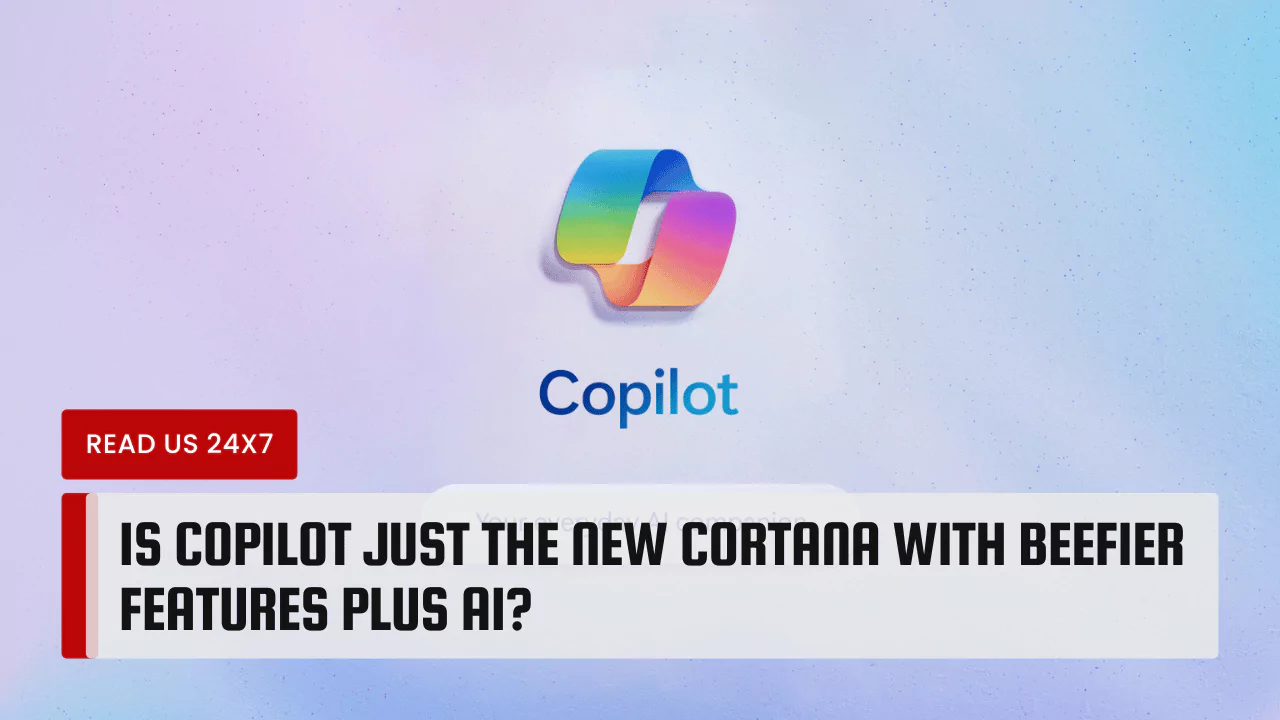Copilot is not the new Cortana with beefier features plus AI. Copilot is a modern tool used to code tasks and assist with work. Cortana was built as a voice assistant for daily use. Copilot stands apart by giving developers code hints and support. The tool uses a large model that learns from many examples. Its design meets the needs of today’s work environment. The purpose of each tool is different. Users pick the tool that suits their task. The shift in tech shows a need for clear work aids. This article shows the differences and paths of these tools.
History of Cortana
Microsoft built Cortana as a voice assistant. The tool first appeared on many devices. Cortana could help with reminders and search the web. Users talked to Cortana for basic help. The design aimed to give a friendly face to computing. The tool used a simple form of artificial intelligence. Its purpose was to make daily tasks easier. Cortana could set alarms and send messages. The tool was available on phones and computers. It joined a market of other voice assistants. Many users gave the tool a try. The design aimed to show a new way to use technology. The tool worked by processing voice commands. It gave answers to simple questions. The tool became known in many homes. It did not require much training to use. The rise of smartphones helped the tool grow. Cortana left a mark in the early tech days. It showed a path for future work tools.
What is Copilot?
Copilot is a tool for code work. It comes from a well-known tech firm. The tool uses a large AI model. Copilot helps developers write code. The tool learns from many examples. It sits in the code editor. The tool shows code suggestions as the user types. It gives hints to fix errors. Copilot works with many programming languages. The design helps with tasks that take long to write. The tool provides short code lines and ideas. It works with syntax and structure. The tool lets users work faster on projects. Copilot is built for work rather than for voice. The tool uses deep learning methods. It understands the code that the user writes. The tool fits in modern work environments. It shows a new way to build code. Copilot brings new support to work tasks. The tool marks a change in how coding help is given. It aids work.
Differences in Purpose and Design
Cortana and Copilot serve different tasks. Cortana works with voice and helps with reminders. Copilot aids with writing code and fixing errors. The design of Cortana was for a broad audience. Its role was to answer simple questions. The tool worked by hearing words and giving answers. It used a basic form of AI. Copilot has a narrow focus on code. It helps with syntax and logic. The tool provides suggestions that follow the code style. Cortana did not aim to solve code problems. Its role was to support day-to-day tasks. Copilot uses deep learning to understand code. The tool learns from a large amount of data. Its work is not for simple answers. It gives hints to developers who write code. The design of the two tools shows a clear divide. One tool helps with voice commands. The other tool helps with writing and fixing code. Each design fits a different need. The tasks are set apart by their design. The change in focus marks a new use of AI in tech. The future of work tools can be seen in this divide. The two systems meet their roles with distinct methods. They are built to serve unique users.
User Experience and Interface
Users talk to Cortana by speaking. The tool listens to voice input. It gives short replies to simple queries. The screen shows clear icons and a friendly face. The tool fits in small screens on phones and computers. Copilot sits in the code editor. The panel shows the text as code suggestions. Developers read hints and pick them. The tool gives ideas as a side panel. The design keeps the work area neat. Users can skip hints if they wish. The design of each tool fits its task. One tool uses speech and tone. The other tool uses text and code. Cortana uses a light screen. The work screen for Copilot shows many lines. Users choose the tool that fits their needs. The design marks a clear divide. The interface for each tool stays true to its work. The display and layout help users perform many daily tasks with great ease.
Future Outlook
The field of work tools may change soon. New ideas will shape how tasks are done. AI will grow in power and scope. Copilot may learn more and do more tasks. Developers will use many tools to build code. The market will see more support tools. Voice assistants may find a new role. The work of tech moves in new ways. The need for clear work aids remains strong. The changes in tech show a shift in how work is done. User needs and tech change set the future. These trends will guide the next era of work.
Challenges and Considerations
Each tool faces real issues. Cortana did not meet rising needs, and the copilot may produce an error code. Users must check the work given. The market expects high accuracy, and the tools must improve with time. Tech work is complex and demands clear answers, and developers work hard to solve many issues.
Conclusion
The answer remains simple. Copilot is not Cortana with extra features. The tool stands on its own. It helps with code in a new way. Cortana helped with voice and reminders. Each tool has a unique goal. The work of each fits different needs. The market shows a clear divide. The rise of AI brings new roles. Users choose the tool that meets their task. The field of tech shows a significant change. The work of each tool is straightforward. The two systems mark a shift in how work is done. The future will show new changes. The change will come soon.



